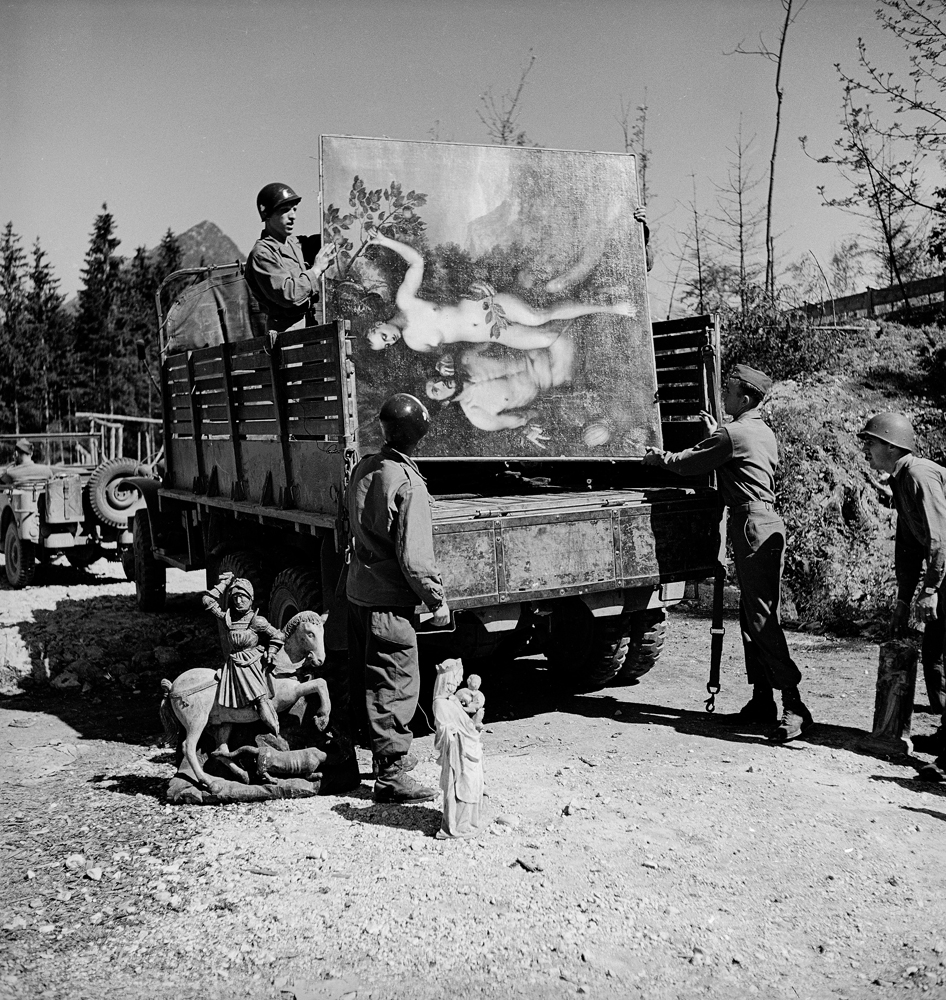
As Hitler’s armies vanquished country after country in the late 1930s and early 1940s, they also emptied European museums, churches and private households of countless paintings, sculptures, relics and other irreplaceable works of art. Hitler, a failed painter, was obsessed with amassing the world’s largest collection of fine art for his planned Führermuseum in the Austrian city of Linz, and pillaging was a state priority for the Reich.
Ahead of the Allied invasion of Europe, the American government devised plans for the protection of cultural treasures. Toward this end, the U.S. military recruited a division of specialists — the Monuments, Fine Arts, and Archives section, a.k.a, “Monuments Men” — charged with locating stolen art and returning it to its pre-war owners. Unlike so many armies throughout history, the Allies did not systematically abscond with the cultural treasures of their enemies. Instead, over the course of their operations, the Monuments Men found and returned more than five million stolen works.
This picture, made by LIFE’s William Vandivert in the spring 1945, shows American soldiers loading recovered paintings and sculptures — reportedly stolen by Hermann Goering himself — into the back of a truck, in hopes that they might be returned to their rightful owners. It is an image that movingly captures a small attempt to undue one of the many original sins of the war.
Christopher A. Casey is a doctoral student studying history and international law at the University of California, Berkeley.

More Must-Reads from TIME
- Where Trump 2.0 Will Differ From 1.0
- How Elon Musk Became a Kingmaker
- The Power—And Limits—of Peer Support
- The 100 Must-Read Books of 2024
- Column: If Optimism Feels Ridiculous Now, Try Hope
- The Future of Climate Action Is Trade Policy
- FX’s Say Nothing Is the Must-Watch Political Thriller of 2024
- Merle Bombardieri Is Helping People Make the Baby Decision
Contact us at letters@time.com